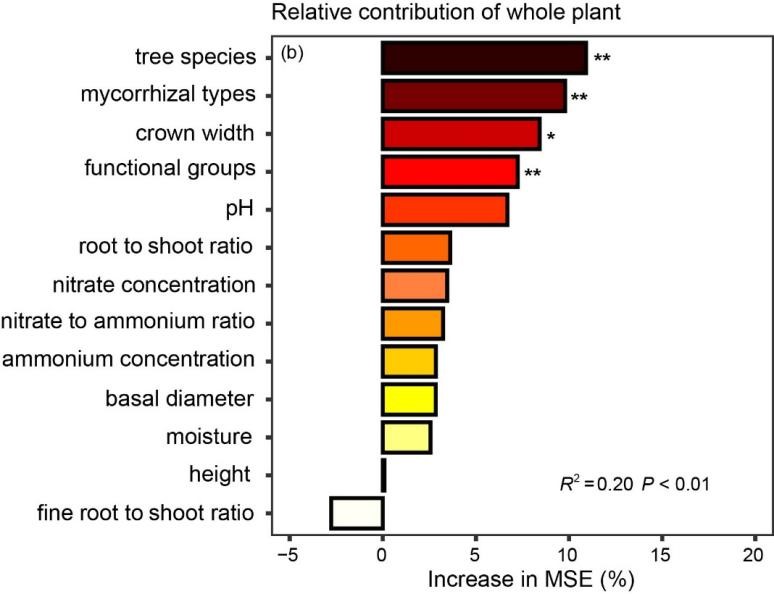Field Study Reveals Nitrate as Favored Nitrogen Source for Temperate Trees in Northeast China
A new study has revealed that temperate forest tree species, regardless of whether they associate with ectomycorrhizal (ECM) or arbuscular mycorrhizal (AM) fungi, consistently show a strong preference for absorbing nitrate over ammonium. The findings challenge long-standing assumptions about nitrogen uptake strategies among different tree functional groups and offer fresh insight into how plant-fungi symbioses influence nutrient cycling in forest ecosystems.
Researchers from the Institute of Applied Ecology, Chinese Academy of Sciences, led by Dr. FANG Yunting, conducted an extensive field experiment in northeastern China using a novel method known as the paired-¹⁵N (an isotope) labelling technique. This method involves injecting isotopically labelled ammonium nitrate (NH₄NO₃) into the rhizosphere—the soil zone surrounding plant roots—and tracing the rate and proportion of ¹⁵N uptake by the plants. The approach enables precise measurement of a plant's nitrogen source preference under natural conditions.
The study, published in Journal of Plant Ecology, involved seedlings from 10 tree species—six broadleaved and four coniferous—planted at the Qingyuan Forest Ecosystem National Observation and Research Station. The species were classified by their root symbiosis: AM-associated broadleaved trees, ECM-associated broadleaved trees, and ECM-associated conifers.
Results showed that all 10 species took up more nitrate (NO₃⁻) than ammonium (NH₄⁺), with nitrate accounting for between 49% and 83% (average 69%) of total nitrogen absorbed. Among the groups, AM-associated broadleaved species demonstrated the strongest nitrate preference (average 79%), followed by ECM-associated broadleaved species (70%) and ECM-associated conifers (60%). The researchers employed a random forest model—an advanced machine learning algorithm used for variable selection—to identify the primary drivers of this variation. They found that mycorrhizal type, plant functional group, and the ratio of fine root mass to above-ground biomass (fine root-to-shoot ratio) were the most influential factors determining nitrate uptake patterns (Figure 1).
Nitrogen is a critical element in plant growth and ecosystem functioning, serving as a key component of amino acids, proteins, and chlorophyll. In forest systems, nitrogen exists primarily in two inorganic forms: ammonium (NH₄⁺) and nitrate (NO₃⁻). The type of nitrogen a plant prefers can affect interspecies competition, carbon storage potential, and overall forest productivity. Moreover, the findings suggest that AM-associated trees may have an advantage in nitrate-dominated soils, which could inform reforestation or afforestation strategies.
The research underscores the complex interplay between root symbioses and nutrient acquisition. It also highlights the potential for further application of the paired-¹⁵N labelling method in ecological studies. By deepening understanding of species-specific nutrient preferences, the study provides valuable evidence for forest management and biodiversity conservation under changing environmental conditions.

Figure 1. Key factors influencing the nitrate uptake rate (%) in the seedlings of 10 tree species (Image by QU Yuying).



